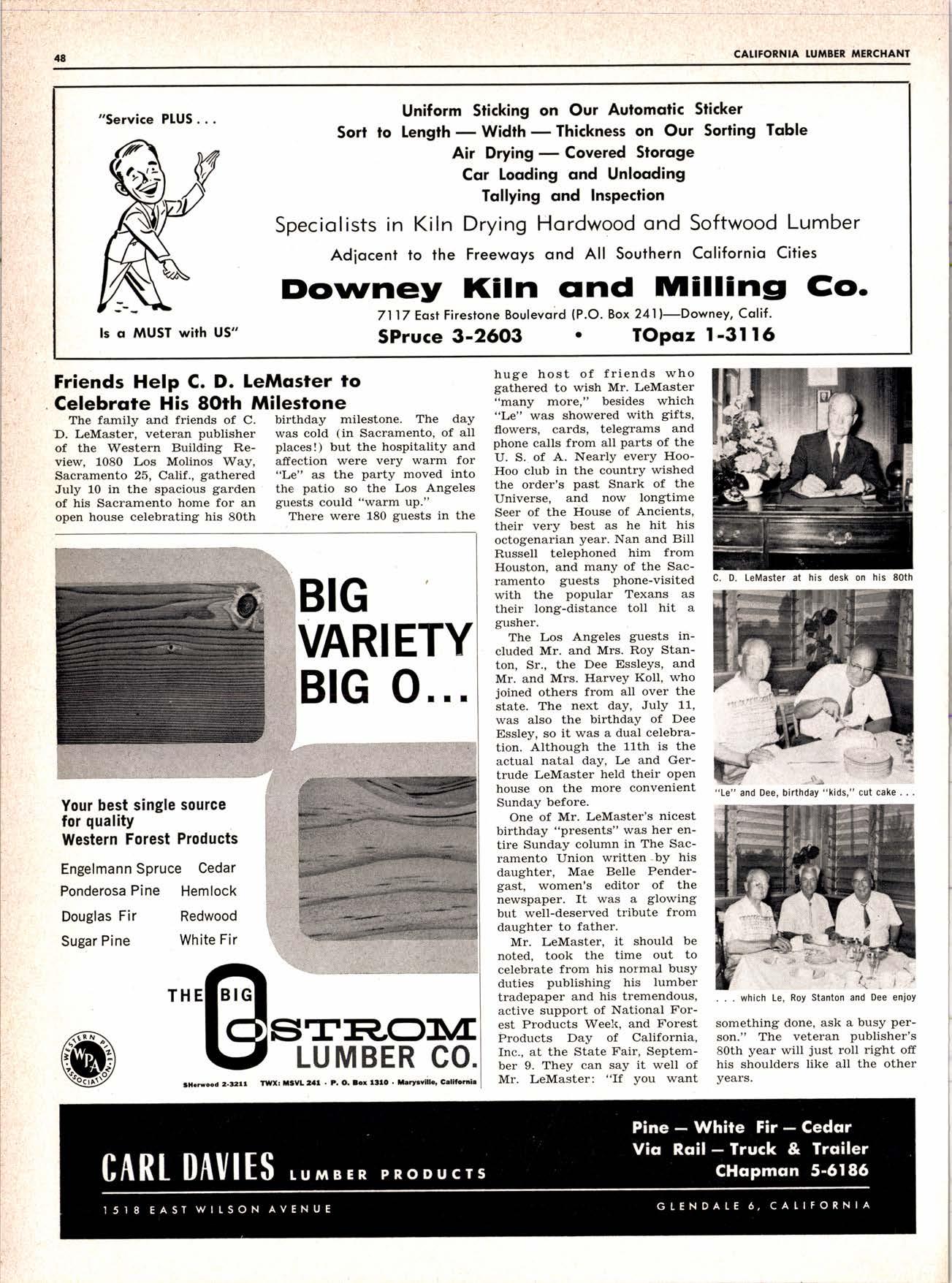
2 minute read
Solonq Cedor qnd ttilling Co. Perfects New Product
Savings In Totat Costs And Spurs Buitders To Use Newty
In light of the modern-day competition for house sales, local builders are turning to new methods, products and designs. "It's been a long time since we've seen the builder and sales agent compete so aggressively for the buyer's dollar," states Herschel Larrick, Sr., board chairman of Solana Cedar and Milling Company.
Mr. Larrick, whose connection with the lumber business in San Diego dates back to 1910 when the harbor boasted the Benson Lumber Company (a sawmill oldtimers will remember), says that lumber has been for years a key factor in the success of San Diego's home-building boom.
In the past, wood accounted for a greater share of the finished work in home construction than it does today. During the "40s," many substitutes appeared to catch the builders' fancy and it's been an uphill battle to get finished lumber back into the picture. Plaster, formica, tile, veneered wood and metal have found wide acceptance and use in places where lumber was once dominant.
Some of these substitutes had original cost advantages to builders but, in many cases, consumers re-
Protaise Of Faster Sates Developed Wood Finishes
sisted, stating they preferred the warmth and solid feeling of permanence only wood could pioduce.
Take the outside finish of a new home for example. Everyone agrees that the use of wood siding increases the be_auty and value of any home. However, a good finishing job requires that the siding be "backpri*.6"-painting the sides, ends and unexposed portions before it ls nailed to the studs. If the wood siding isn't backprimed, moisture content increases and the boards will be more likelv to buckle, warp and pop nail heads ofi.
Until recently, quality builders went to the expense of pre-cutting, stacking and hand-priming the wood. After the siding was applied, the painting crew returned to add the final outside coat. Where this procedure wasn't followed wood siding was installed without priming, or wood was simply eliminated altogether.
Mr. Larrick and his son, Herschel Larrick, Jr., with the enthusiastic cooperation of Art Baxter, Western States representative of Samuel Cabot, Inc., makers of Ranch Ilouse Stains, and G. N. Scofield. Southern California distributor of Cabot's products, went to work about three years ago on the idea of Pre-Finished Cedar at a cost anyone could afford.
They were confident that an efficient, economical method for pre-finishing wood for both interior and exterior use would help restore wood to its former position of preference, with a subsequent sales increase for their 38-year old company.
They were right.
The first development by the Solana Beach firm was a method for applying Cabot's Ranch House hues, for which they obtained the exclusive franchise for San Diego and Imperial counties. But the problem was to build machinery that would do more than paint. The process, to be most effective, required rolling-on the product in sufficient quan- tity and uniformity to sink into and permeate the wood.
After perfecting the machinery to handle any kind of wood siding-incense cedar, red cedar or redwood, a production line was set up to handle the demand. The complete line, about 60 feet in length, processes 20'board feet per minute. The wood is carried through special application rollers, then brushed by eight bristle units and finally baked in sixteen 35O-degree heating ovens.
The end result is Solana Brand "Cabotized" siding,

![t?lV 6]@rror,ih Shul](https://static.isu.pub/fe/default-story-images/news.jpg)






